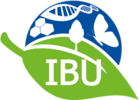Contact
Prof. Dr. Dirk Albach
Institute of Biology and Environmental Sciences (IBU) Phone +49 (0)441 798 3339 eMail
B2
B2: Kale (Grünkohl) – Biodiversity for sustained growth of a locally important vegetable

Mr Christoph Hahn, M.Sc.
IBR PhD Candidate
| Contact details: | Institute for Biology and Environmental Sciences Biodiversity and Evolution of Plants Research Group Carl-von-Ossietzky-Str. 9-11 26111 Oldenburg, Germany |
|---|---|
| Room: | W4-0-050 |
| Telephone: | +49 (0)441 7983343 |
| Email: | |
| Homepage: | uol.de/en/biology/plant-evol/staff/hahn-christoph/ |
Supervisors:
PI: Dirk Albach, Co-PIs: Peter Schupp, Nicolai Kuhnert (Jacobs University Bremen)
Projects and Research:
Background
Cabbage is a widely cultivated vegetable with important varieties in many parts of the world, especially Europe. The most commonly grown varieties are likely white cabbage and broccoli. Kale is the traditional variety most commonly grown along the northern Atlantic and North Sea coast to Northern Germany. Its origin is unclear with the earliest records dating to the 15th century. Kale is not just a traditional food but contains many glucosinolates, flavonoids and carotenoids (like lutein) known to be nutritious and healthy for a variety of purposes (anticarcinogen, anticholesterol, cell-protective and retina protective). These compounds are most commonly investigated in other varieties of cabbage but this is more likely due to the lack of knowledge on kale than any other reason since kale is known to contain larger quantities of these compounds than other varieties. However, this has only been investigated on a handful of varieties by a few local large farmers and is not publically available. The considerable variation in local races still available in Northern Germany make it possible to investigate the phytochemical arsenal and genetic basis of this variation in more detail. Initial investigations have demonstrated large variation among local and commercial cultivars, which raises the question whether this variation has some biological function (balancing selection to avoid herbivores on the most common race) or is more likely due to local tastes.
Outline and aim for a PhD thesis
In this project, we will investigate in parallel the phytochemical arsenal of ca. 35 cultivars of kale, sequence genes responsible for glucosinolate biosynthesis and test the effect of these plants on generalist and specialist herbivores (slugs and caterpillars). Since many of these compounds are not produced constitutively but are inducible, we will investigate the presence, quantity and effects of these compounds at different life stages, temperatures and in different plant organs. In the end, we expect insights which cultivar is most resistant to herbivory, which contains the healthiest composition of compounds and at which life stage which organ shall be harvested to have an optimal effect.
Supervision
The project will be supervised by three PIs. Dirk Albach will be the lead-PI as the coordinator of kale research and providing expertise in the genetic analysis. Nikolai Kuhnert (Jacobs University Bremen) is an expert on plant phytochemistry and offers experience with glucosinolates in kale. Peter Schupp will provide expert guidance on chemical ecology and experiments with herbivores.
Publications:
Previous publications of the candidate:
Hahn C., Müller A., Kuhnert N., Albach D. (2016): Diversity of Kale (Brassica oleracea var. sabellica): Glucosinolate Content and Phylogenetic Relationships. J. Agric. Food Chem. 64: 3215-3225
Hahn C., Albach D. (2013): Der Vergleich verschiedener Sorten des Grünkohls. Oldenburger Jahrbuch 113: 237-256
Contributions to scientific conferences:
Phylogenetic Symposium 2016, poster presentation
Botanikertagung 2015, poster presentation
Curriculum Vitae:
2012: B.Sc. Biology, University of Oldenburg
2015: M.Sc. Biology, University of Oldenburg
From June 2015: Doctoral student, University of Oldenburg



